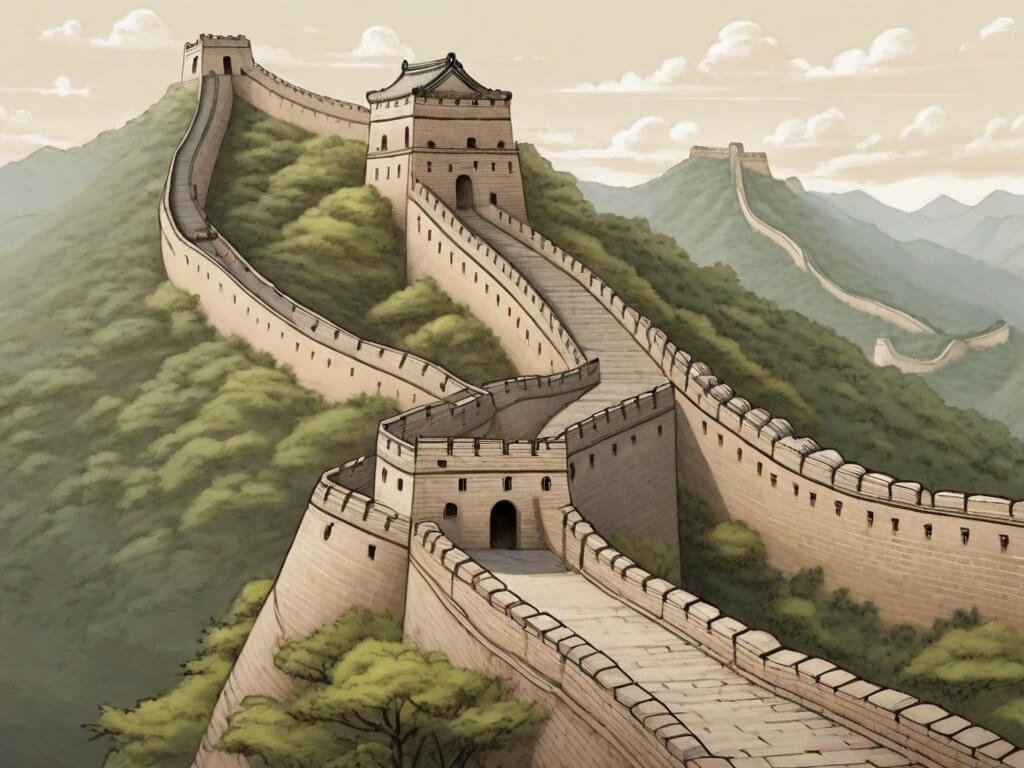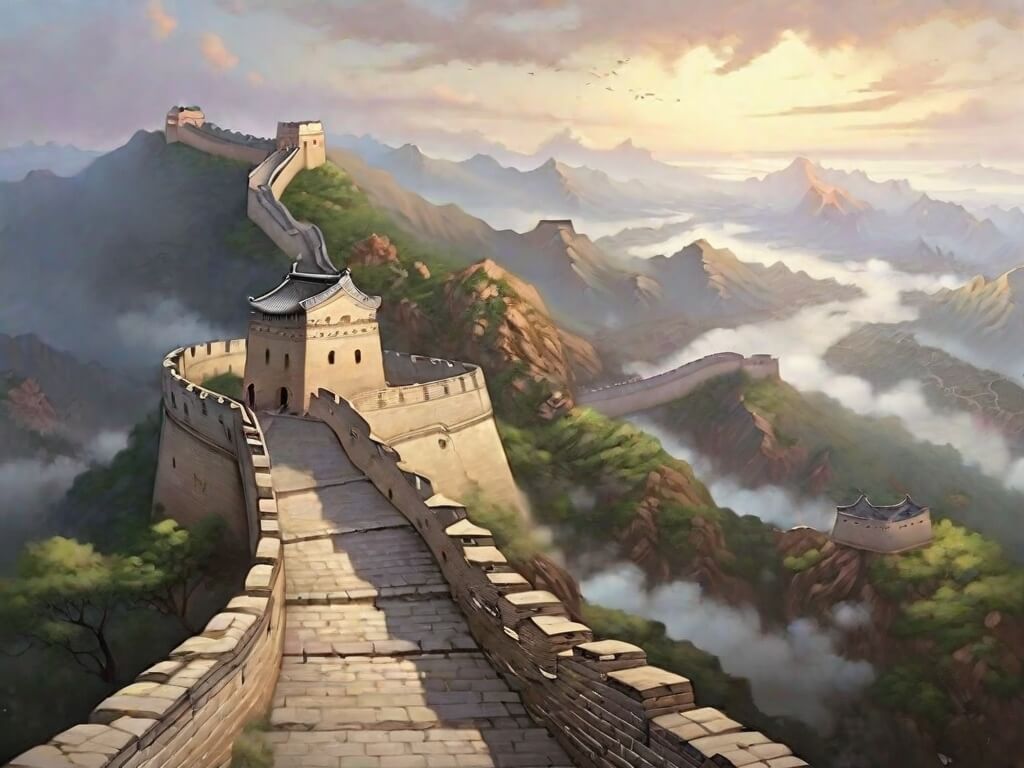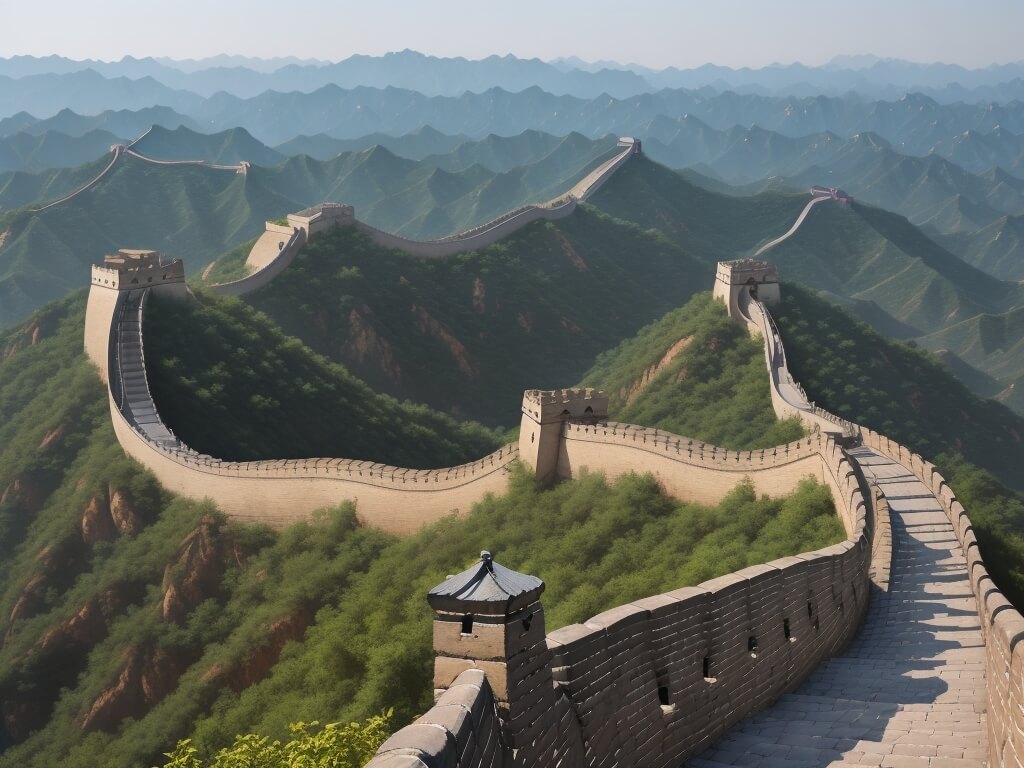When is the Great Wall Of China built? How long is it? Explore the rich history, length, purpose, and cultural significance of the Great Wall of China in these intriguing facts.

The longest wall in the world, stretches from Shanhaikwan on Yellow Sea in the east to province of Kansu in the west, a distance of about 1,200 miles when measured in a straight line. With all its windings, however, the wall is over 1,500 miles long. It was begun in the 3rd century B.C. by the Emperor Shih Huang Ti, who united the various parts of China into a single empire. The purpose of the wall was to keep out the fierce tribes called Tatars who sometimes raided China from central Asia. It has often been added to, rebuilt, mended and in some places doubled for extra protection, especially during the 14th century, and much of the seaward end was destroyed by the Japanese between 1933 and 1937. Nevertheless, the wall is still of importance, as it divides Inner China from the self-governing regions of Outer China. Also, it marks the boundary between the regular farming country and the outer lands where there is little but the flocks belonging to wandering tribes.
The wall, which from a distance looks like an endless snake wriggling across the brown land, is made of stone and earth, usually with a coating of brick, and is from 15 to 30 feet high. Every few hundred yards there are watchtowers, where fires were lit to warn of the enemy’s coming, and along the top runs a road about 12 feet wide between narrow walls. At longer intervals there are big gatehouses with huge nail-studded gates, kept shut at night, through which traffic passes along the roads leading out of China. In some places there is a moat on the outer side of the wall. As the wall was built to serve as a defensive barrier, it makes no attempt to follow the easy way, but runs along the crests of mountain ridges and takes advantage of narrow gorges. Although in the past the wall did not stop invaders such as the Mongols, Manchus and Japanese from breaking in and for a time conquering parts of China, it must because of its sheer size and majesty be regarded as one of the greatest creations of mankind.

Great Wall Of China Facts
The Great Wall of China is one of the most iconic and historically significant structures in the world. Here are some detailed facts about this marvel of ancient engineering:
- Historical Significance:
- The construction of the Great Wall of China began over two millennia ago, with various dynasties contributing to its development. The most famous sections were built during the Ming Dynasty (1368-1644), but its origins can be traced back to the 7th century BC.
- Length:
- The total length of the Great Wall is estimated to be around 13,171 miles (21,196 kilometers). It is not a single, continuous wall but rather a network of walls and fortifications built at different times and locations.
- Purpose:
- Contrary to common misconceptions, the primary purpose of the Great Wall was not to keep out invading armies but rather to serve as a series of defensive fortifications, allowing for the control of trade routes and border regions. It was also used for border patrols, signaling, and customs duties.
- Construction Materials:
- The wall was constructed using various materials depending on the region. In the northern parts, it was often built using rammed earth and stones, while in other areas, it was made from bricks or wood.

- The wall was constructed using various materials depending on the region. In the northern parts, it was often built using rammed earth and stones, while in other areas, it was made from bricks or wood.
- Watchtowers:
- Throughout the Great Wall, there are numerous watchtowers used for surveillance, communication, and defense. These structures were strategically placed to allow soldiers to monitor and signal any approaching threats.
- Labour Force:
- The construction of the wall involved a vast labor force, including soldiers, peasants, and prisoners. It is estimated that millions of people contributed to its construction over the centuries.
- UNESCO World Heritage Site:
- The Great Wall of China was designated as a UNESCO World Heritage Site in 1987 to protect its historical and cultural significance. It is also considered one of the New Seven Wonders of the World.
- Visibility from Space:
- The notion that the Great Wall of China is visible from space is a common myth. While the wall is indeed very long, it is not wide enough to be seen with the naked eye from low Earth orbit. However, it can be seen in satellite imagery.
- Varying Architecture:
- The architecture of the wall varies depending on the geography of the region it traverses. In some areas, it closely follows the natural contours of the land, while in others, it is more like a straight line.
- Conservation Efforts:
- Many sections of the Great Wall have suffered from neglect, erosion, and damage over the centuries. Efforts have been made to restore and preserve the wall, but some sections remain in a state of disrepair.
- Famous Sections:
- Some of the most well-known sections of the Great Wall include Badaling, Mutianyu, Jinshanling, and Simatai. These sections are popular tourist destinations due to their accessibility and scenic beauty.
- Cultural Symbol:
- The Great Wall of China is a symbol of Chinese culture and history. It has been featured in countless works of literature, art, and film and is often associated with China’s resilience and determination.
The Great Wall of China is a testament to the ingenuity and determination of the ancient Chinese people and continues to be a source of fascination and admiration worldwide.